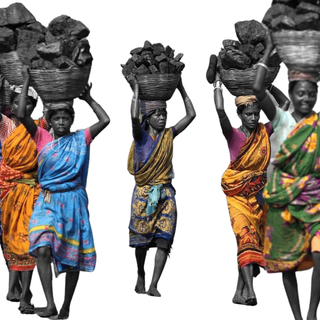
India’s Forests Expanded This Decade, Yet Indigenous Communities Are Still Being Forced Out: Report
Even as forest cover increased, forested land was lost to destructive, pollutive industry and development.

India’s total amount of forest cover expanded over the past decade, according to the “State of India’s Environment 2021,” a new joint report by the Centre for Science and Environment and Downtoearth.org. But forest cover is not the same as forested land, which is increasingly being lost to industry and development.
The definition of forest cover used by the Forest Survey of India allows gardens, orchards, plantations, and even the trees lining roads to be counted as forest cover. “It is a case of mistaking trees for forests, quite literally,” according to the report. Forest land, by contrast, is static on paper, designated as such in government records. Even as industrial projects are increasingly being allowed on this land, the area is still recorded as forested land.
Combined, this means, that even as India made overall gains in total tree cover, the number of trees within forest land reduced. Only 5.1 lakh square kilometers of trees actually cover 7.6 lakh square kilometers of India’s forests.
The area of difference is increasingly devoted to irrigation, mining, and infrastructure projects. Plus, India’s widespread groundwater depletion signals irrigation projects are only likely to become more prevalent and critical. In addition, mining has already expanded, which means actual forested land is likely to continue to be lost.
Related on The Swaddle:
Rajasthan’s Wildlife Board Rezones Protected Forest to Allow Mining of Unique Sandstone
As a result, biodiversity will be more and more threatened. Already, the reallocation of forested land to industry and development has had an effect on India’s tiger population. While India recorded an increase in the overall tiger population over the last five years, “five states — Chhattisgarh, Jharkhand, Odisha, Andhra Pradesh, and Telangana — which have the largest forestland diversions for mining are also the states that registered a decline in their tiger populations,” according to the report.
More importantly, however, communities indigenous to forests will continue to be forced out of their homeland. The homes of one million forest-dwelling people have been caught up in long, drawn-out legal battles over eviction since early 2019, which the convoluted bureaucracy ostensibly designed to protect their rights seems ill-equipped to efficiently resolve. Additionally, eight coal mining projects since 2015 are on forested land originally deemed inviolate by the Forest Survey of India. Among other things, these will lead to a total loss of more than 1 million trees and the eviction of more than 10,000 families — roughly half a million people, by estimating off of India’s average family size.
When not battling eviction from their homes, forest communities face threats to their livelihoods. One such threat is the practice of fragmenting an industrial project, which spreads out industrial activities across patches of non-forest land interspersed with forested land. It’s a loophole in the frameworks actually intended to preserve forest land and people, and it ignores the interconnected nature of ecosystems, critics argue.
“[Approval] is not given for a patch of land, but for the entire project. There will be issues of underground water, rivers, and people’s rights under the Forest Rights Act. How will that be taken care of?” the report quotes Supreme Court lawyer Shomona Khanna. At best, the forested patches between the project land will be polluted or their resources drained away by the industry, at worst, communities have no other option but to move on because of this.
Until the true area of forested land is reflected in Indian records, it’s unlikely any of this will be solved. Acknowledging that forested land requires actual tree cover means acknowledging official activities have ravaged the biodiversity and communities who were there first — and that maybe, just maybe, those communities deserve a bigger say in how that land is used. The end of 2020 brought a draft of “new guidelines that give gram sabhas more power in the management of community forest rights (cfr) and habitat rights….” Hopefully, next year’s report will say the guidelines have been enacted — and maybe even implemented.
Liesl Goecker is The Swaddle's managing editor.
Related


Marriage a ‘Solemn Institution Between a Biological Man and a Biological Woman,’ Centre Says in Affidavit Opposing Same‑Sex Marriage Petitions
